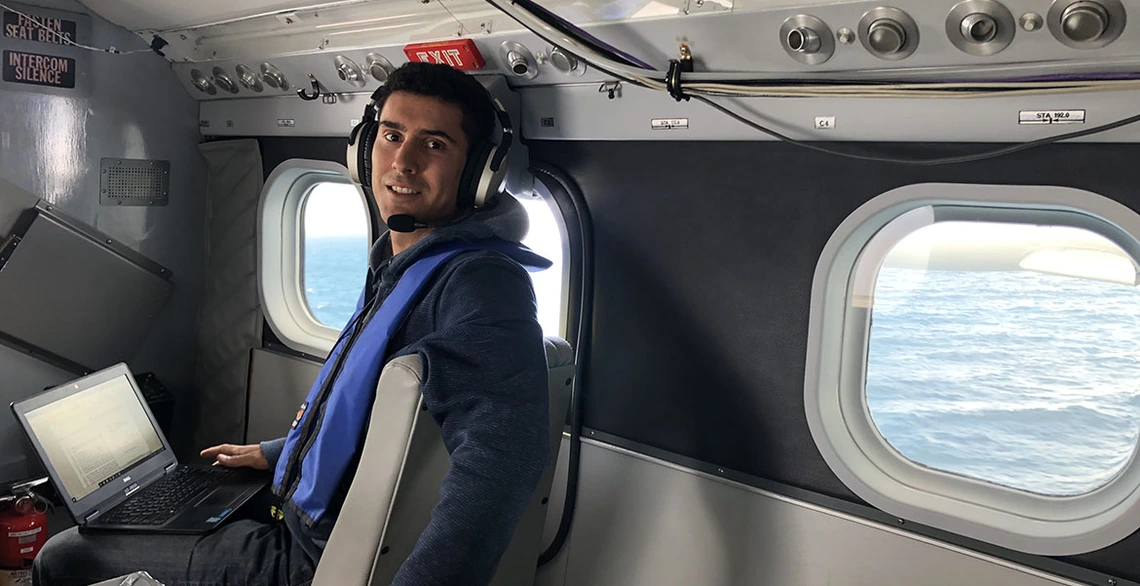Testing Marine Cloud Brightening to Slow Global Warming
CHEE professor helps build a research plan.

Armin Sorooshian has 20 years of experience conducting research on interactions between aerosol particles and clouds. These interactions are the most uncertain factor in our understanding of how humans are altering climate, according to the Intergovernmental Panel on Climate Change.
Armin Sorooshian, chemical and environmental engineering professor and University Distinguished Scholar, is part of a group of leading atmospheric scientists that has offered a consensus research roadmap to evaluating a method of artificially shading Earth’s surface to slow global warming.
With marine cloud brightening, or MCB, scientists inject salt spray into shallow marine clouds to brighten them, increasing their reflection of sunlight and reducing the amount of heat absorbed by the water below. Their plan is described in a paper published in Science Advances. The lead agency is the National Oceanic and Atmospheric Administration.
As the levels of atmospheric greenhouse gases in the atmosphere continue to increase and climate change impacts become more costly, the scientific community is redoubling efforts to investigate the potential risks and benefits of artificially shading Earth’s surface to slow global warming, according to a NOAA article describing the paper.
“Interest in MCB is growing, but policymakers currently don’t have the information they need to reach decisions about if and when MCB should be deployed,” said lead author and NOAA researcher Graham Feingold.
However, Feingold cautioned that MCB would not replace decarbonization and would not alleviate ocean acidification.
“To reduce global temperatures, our highest priority should be to remove carbon dioxide from the atmosphere. MCB might help to alleviate the worst impacts of climate change,” he said.
The MCB Effect
For decades, studies have shown that aerosol emissions from oceangoing ships can – under some conditions – brighten low-hanging clouds, which leads to a cooling effect, according to Sorooshian.
“Hopefully, this fact can promote more research into MCB so we can learn more about its feasibility for solar radiation management and understand especially how its potential application can alter regional temperature and precipitation patterns,” said Sorooshian, who holds joint appointments in the College of Science, the Wyant College and the Mel and Enid Zuckerman College of Public Health.
Current MCB proposals rely on saltwater spray, which would mimic plumes of sulfur-rich emissions from ship stacks or volcanoes, to increase the aerosol concentration in the lower marine atmosphere. Ideally, droplets in the saltwater spray evaporate to produce fine particles that are carried up to the cloud layer by turbulent and convective air motions.
If MCB techniques could consistently influence clouds to reflect more sunlight back to space than similar clouds with a lower droplet concentration, then it has the potential to be an effective solar radiation modification technique, at least at the local scale, scientists say. This in turn could produce some cooling.
The study proposes a substantial and targeted program of MCB research that includes laboratory studies, field experiments, and cloud modeling. As a result, new laboratory facilities are needed to address gaps in understanding aerosol and cloud microphysical processes, as few existing labs can address these processes.
Taking these next steps will depend on the availability of resources, including funding, and coordination of activities between experimentalists and modelers, according to Sorooshian.

